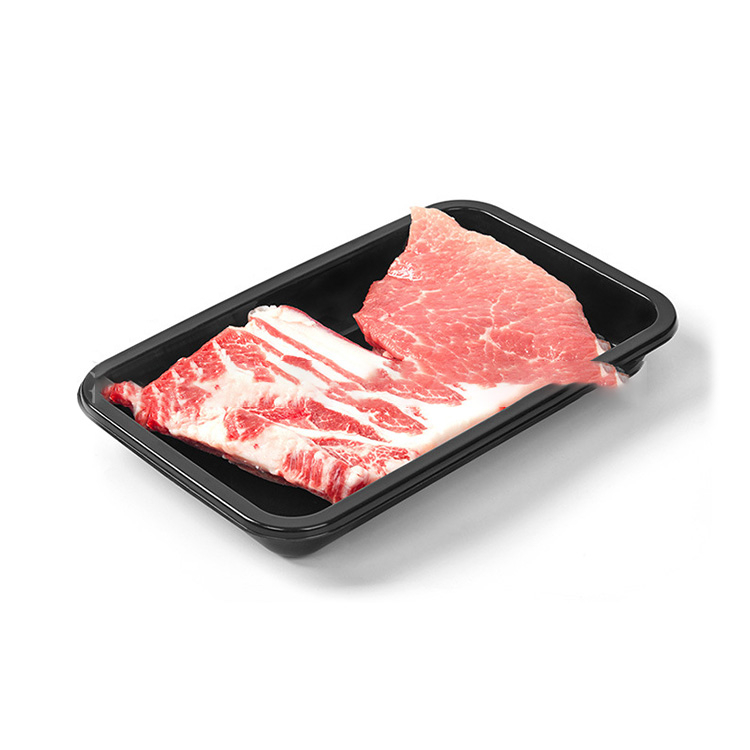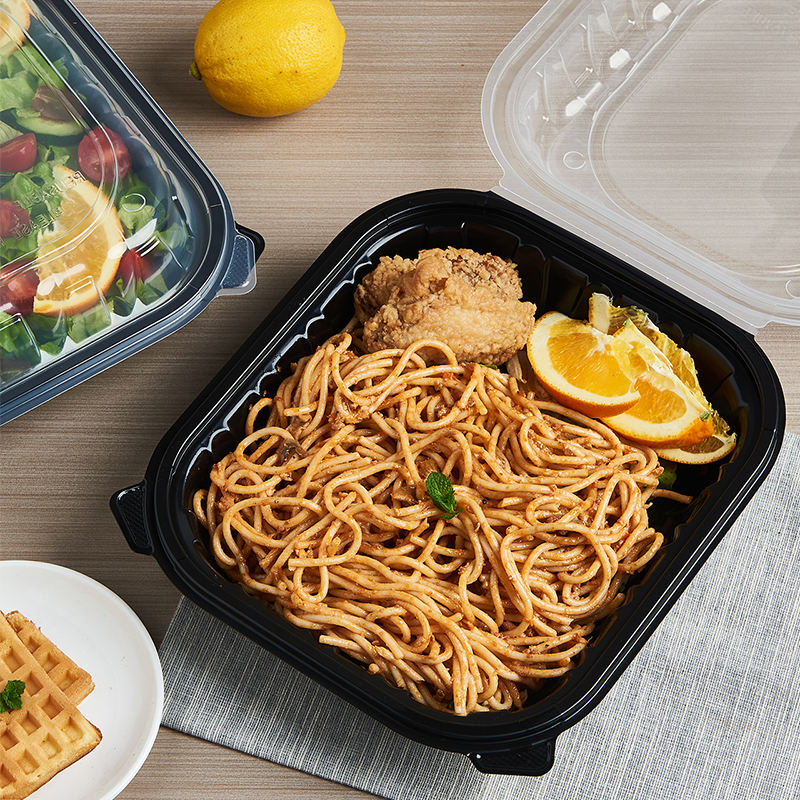Have you ever wondered how food stays fresh longer? Polypropylene food packaging plays a crucial role in food safety. In this article, we’ll explore its benefits and features, highlighting why it’s a top choice for the food industry.

Understanding Polypropylene (PP)
What is Polypropylene?
Polypropylene, often abbreviated as PP, is a versatile thermoplastic polymer. It’s made from the polymerization of propylene monomers. This material is known for its durability and resistance to various chemicals, making it ideal for food packaging.
Chemical Composition:
● Polypropylene consists of repeated units of propylene, a byproduct of petroleum refining.
● Its structure allows it to be lightweight yet strong.
Comparison with Other Plastics:
● Polyethylene (PE): While both are used in food packaging, PP has a higher melting point and better chemical resistance.
● Polyvinyl Chloride (PVC): Unlike PVC, PP is generally considered safer for food contact and does not contain harmful additives.
Types of Polypropylene Food Packaging
Polypropylene food packaging comes in various forms, each serving specific needs.
Rigid vs. Flexible Packaging
● Rigid Packaging: This includes containers and trays. They maintain their shape and provide strong protection for food items.
● Flexible Packaging: This includes films and wraps. It’s lightweight and can conform to the shape of the food, reducing waste.
Common Forms of Polypropylene Food Packaging
Here are some popular types of polypropylene food packaging:
Type | Description |
Containers | Sturdy and stackable, ideal for salads and leftovers. |
Trays | Often used for meats and ready-to-eat meals. |
Films | Thin and lightweight, perfect for wrapping sandwiches. |
Wraps | Versatile for covering various food items, keeping them fresh. |
These forms of polypropylene food packaging are widely used in the food industry due to their safety and effectiveness. They help keep food fresh while ensuring safety and convenience for consumers.
Exceptional Barrier Properties of Polypropylene Food Packaging
How Does Polypropylene Protect Food?
Polypropylene food packaging offers exceptional barrier properties. It effectively blocks oxygen and moisture, which are key factors in food spoilage.
Oxygen Barrier:
● It prevents oxygen from entering the packaging, slowing down oxidation.
● This is crucial for preserving the freshness of food items.
Moisture Barrier:
● Polypropylene resists moisture absorption, keeping food dry.
● This is especially important for items like baked goods and meats.
Examples of Food Items Benefiting from These Properties:
● Meats: Keeps them fresh longer by preventing spoilage.
● Baked Goods: Maintains texture and flavor, preventing staleness.
● Snacks: Protects from humidity, ensuring crunchiness.
Comparison with Other Packaging Materials
When comparing polypropylene to other materials, its advantages become clear.
Material | Advantages of PP |
Paperboard | PP is moisture-resistant, while paperboard absorbs water. |
Other Plastics | PP has better barrier properties than many other plastics. |
Moisture Absorption and Spoilage Prevention:
● Unlike paperboard, PP does not absorb moisture, which helps prevent spoilage.
● This makes it ideal for products that need to stay dry and fresh.
Mold Growth Prevention:
● Polypropylene's barrier properties significantly reduce mold growth.
● It keeps products like bread soft and fresh, extending shelf life.
In summary, polypropylene food packaging stands out for its ability to protect food from environmental factors. Its superior barrier properties make it a top choice in the food industry.
Temperature Resistance of Polypropylene Food Packaging
Versatility in Temperature Applications
Polypropylene food packaging is known for its versatility in temperature applications. It can safely handle a wide range of temperatures, making it an excellent choice for various food storage needs.
● Freezing: PP can withstand low temperatures without becoming brittle. This makes it ideal for frozen meals and ice cream containers.
● Refrigeration: It remains stable in the fridge, ensuring your leftovers stay fresh.
● Heating: Many polypropylene containers are microwave-safe, allowing for easy reheating of meals.
Examples of Usage:
● Home Kitchens: Many families use PP containers for storing leftovers or meal prepping.
● Food Service Industries: Restaurants often rely on PP for takeout containers, ensuring food stays at the right temperature during delivery.
Impact on Food Quality and Safety
The temperature resistance of polypropylene plays a crucial role in maintaining food quality and safety.
● Maintaining Freshness: By keeping food at optimal temperatures, PP packaging prevents spoilage and extends shelf life.
● Case Studies: In the food service industry, restaurants using PP for hot soups found that the containers kept the soup warm for longer periods, enhancing customer satisfaction.
Temperature Control during Transportation:
● Hot Foods: PP containers are designed to retain heat, ensuring that meals like pasta or curries arrive at the right temperature.
● Cold Foods: For items like salads or desserts, PP prevents heat transfer, keeping them cold until served.
Food Type | Temperature Application |
Soups and Stews | Hot food retention during delivery |
Salads | Cold food preservation in transit |
Frozen Dishes | Safe for freezing, maintaining texture and flavor |
In summary, the temperature resistance of polypropylene food packaging is a key factor in its effectiveness. It ensures that food remains fresh and safe, making it a top choice for both home kitchens and the food service industry.
Hygiene and Safety Standards of Polypropylene Food Packaging
Food-Grade Material
When we talk about "food-grade" materials, it refers to substances that are safe for food contact. These materials meet strict regulations to ensure they don't contaminate food.
● Importance of Food-Safe Materials:
○ Using food-grade materials in packaging is crucial for maintaining food safety.
○ It helps prevent harmful substances from leaching into food, ensuring consumer health.
Polypropylene food packaging is recognized as a food-grade material, meaning it’s designed specifically for food storage and handling. This makes it a reliable choice for both home and commercial kitchens.
Chemical Safety
Chemical safety is a significant concern when it comes to food packaging. Let’s dive into some important aspects.
● Leaching and Chemical Migration:
○ Leaching occurs when chemicals from packaging materials transfer to the food.
○ Polypropylene is known for its low risk of leaching, making it safe for food contact.
Why PP is Considered Safe:
● Polypropylene does not contain harmful chemicals such as BPA, which can be found in some plastics.
● It is stable under various conditions, reducing the risk of chemical migration.
Preventing Cross-Contamination:
● In commercial kitchens, preventing cross-contamination is vital.
● Using polypropylene containers helps maintain hygiene, as they are easy to clean and resistant to bacterial growth.
Safety Aspect | Polypropylene Benefits |
Leaching Risk | Low risk of harmful substances leaching |
Chemical Composition | Free from BPA and other harmful chemicals |
Hygiene Maintenance | Easy to clean, reducing cross-contamination |
By adhering to hygiene and safety standards, polypropylene food packaging ensures that food remains safe for consumption. This commitment to safety makes it a preferred choice in the food industry.
Versatility in Sizes and Shapes
Customization for Different Food Products
Polypropylene food packaging stands out due to its versatility in sizes and shapes. This adaptability makes it suitable for various food products.
● Overview of Sizes and Shapes:
○ PP packaging comes in numerous dimensions, from small containers for dips to large trays for family meals.
○ Shapes can range from rectangular to round, catering to different food types.
Specific Applications:
● Sandwiches: Sandwich clamshells keep sandwiches fresh while being easy to stack.
● Salads: Clear, hinged containers allow customers to see the freshness of salads.
● Meats: Vacuum-sealed PP bags maintain the quality of meats during storage.
Benefits for Businesses
The versatility of polypropylene packaging offers significant advantages for businesses in the food industry.
● Inventory Management:
○ With a range of sizes, businesses can optimize their inventory. They can choose the right packaging for different products, reducing waste.
● Customer Satisfaction:
○ Customers appreciate the variety. Whether they want a single serving or a family-sized portion, there’s a PP solution available.
Case Examples:
● Cafés: Many cafés use PP containers for salads and sandwiches, allowing for quick service and easy grab-and-go options.
● Meal Prep Services: These businesses utilize diverse PP packaging to cater to different dietary needs and portion sizes.
Business Benefit | Polypropylene Advantages |
Inventory Flexibility | Multiple sizes reduce excess stock |
Customer Appeal | Variety meets diverse consumer demands |
Accommodating Quantities | Suitable for both small and large orders |
Polypropylene food packaging truly accommodates diverse packaging needs, making it a top choice for businesses of all sizes. Its flexibility helps streamline operations while enhancing customer experience.

Environmental Considerations: Recyclability and Sustainability
Is Polypropylene Food Packaging Eco-Friendly?
When it comes to eco-friendliness, polypropylene food packaging has some notable advantages.
● Recyclability of PP Containers:
○ Polypropylene is recyclable, which means it can be processed and reused.
○ Many recycling facilities accept PP, but availability can vary by location.
● Resin Identification Code (RIC) - 5:
○ Polypropylene is marked with the RIC number 5, helping consumers identify it as recyclable.
○ This code is crucial for proper sorting in recycling facilities, ensuring it gets recycled effectively.
Key Points:
● PP containers are lightweight, reducing transportation emissions.
● They have a lower environmental footprint compared to some other plastics.
Sustainable Practices in the Food Industry
Sustainability is becoming increasingly important in the food industry. Here’s how polypropylene packaging fits into this trend.
● Post-Consumer Recycled (PCR) Content:
○ Many manufacturers are incorporating PCR materials into their PP packaging.
○ This practice reduces the need for virgin plastic and supports recycling efforts.
● Reducing Environmental Impact:
○ Businesses can adopt sustainable practices by choosing PP packaging.
○ It allows for efficient use of resources and minimizes waste.
Sustainable Practice | Benefits of PP Packaging |
Using PCR Content | Decreases reliance on new plastic |
Lightweight Design | Lowers transportation emissions |
Recyclability | Supports circular economy initiatives |
Consumer Demand:
● There’s a growing demand for sustainable food packaging solutions.
● Consumers are more aware of environmental issues and prefer brands that prioritize sustainability.
By choosing polypropylene food packaging, businesses can meet consumer expectations while contributing to a more sustainable future.
Conclusion
Polypropylene food packaging offers numerous benefits. It is safe, versatile, and eco-friendly.
Its recyclability and customization options make it ideal for various food products.
As consumer demand for sustainability grows, businesses should consider using PP packaging.
By choosing polypropylene, we can enhance food safety while supporting a healthier environment.
FAQs About Polypropylene Food Packaging
Q: What are the common uses of polypropylene food packaging?
A: Common uses include containers for sandwiches, salads, meats, and takeout meals.
Q: How does polypropylene compare to other food packaging materials?
A: Polypropylene is lightweight, durable, and offers better moisture resistance than many alternatives.
Q: Can polypropylene food packaging be recycled?
A: Yes, polypropylene is recyclable and marked with Resin Identification Code 5.
Q: Is polypropylene safe for microwaving food?
A: Yes, polypropylene is microwave-safe, making it suitable for reheating food.
Q: What should consumers look for when choosing food packaging?
A: Consumers should check for recyclability, safety, and whether it meets their food storage needs.
English
العربية
Français
Русский
Español
Português
Deutsch
italiano
日本語
한국어
Nederlands
Tiếng Việt
ไทย
Polski
Türkçe
አማርኛ
ພາສາລາວ
ភាសាខ្មែរ
Bahasa Melayu
ဗမာစာ
தமிழ்
Filipino
Bahasa Indonesia
magyar
Română
Čeština
Монгол
қазақ
Српски
हिन्दी
فارسی
Slovenčina
Slovenščina
Norsk
Svenska
українська
Ελληνικά
Suomi
Հայերեն
עברית
Latine
Dansk
اردو
Shqip
Hrvatski
Aymara
guarani
Chichewa
Runasimi
Sesotho
Soomaali










